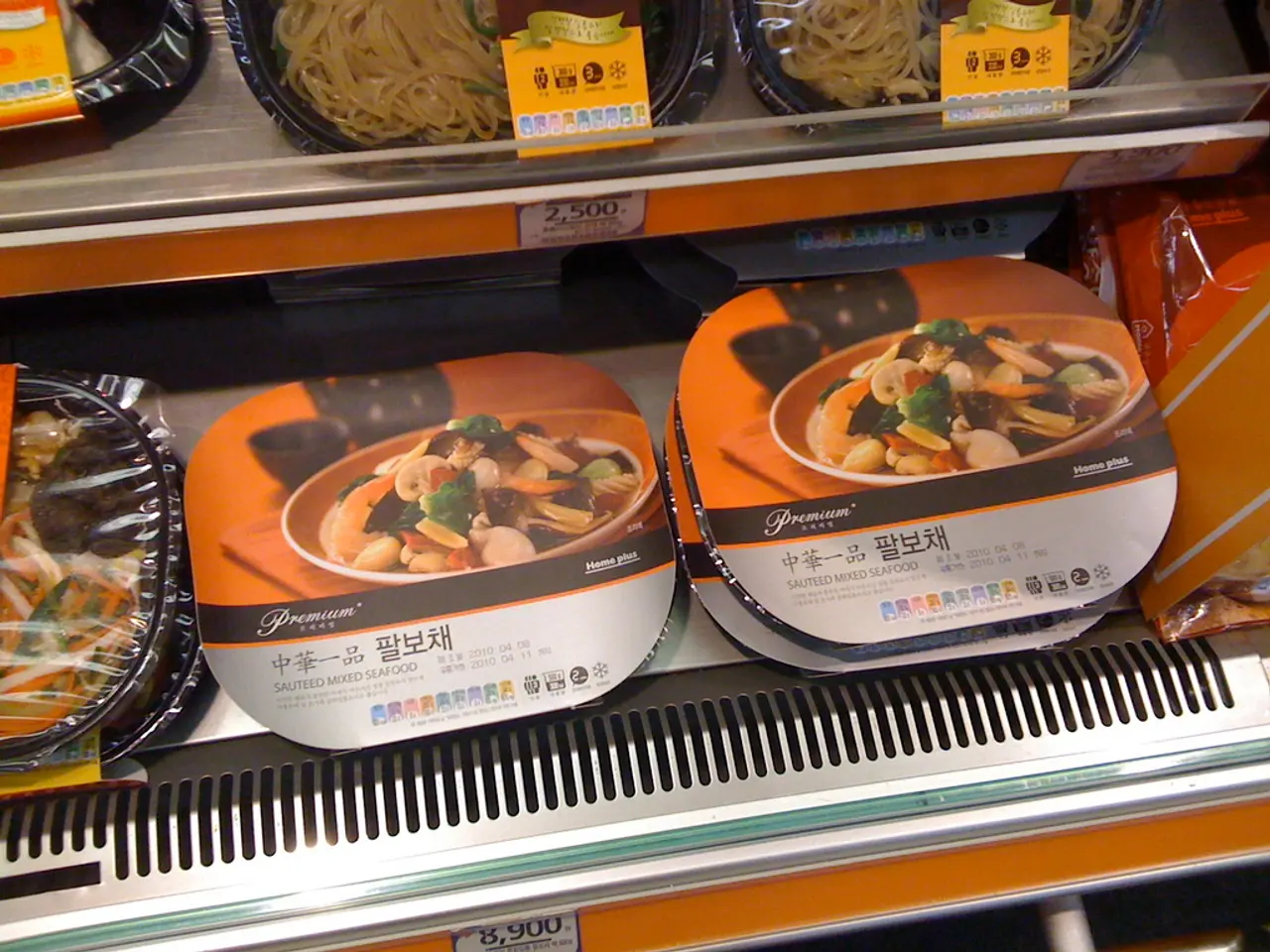Increase in Wholesale Prices in July 2025: +0.5 percent, showing a slight decline monthly, down by 0.1 percent
In July 2025, food and beverage inflation in Germany continued to be a significant concern, with prices for essential items such as meat, milk products, and basic baked goods experiencing increases. According to Destatis, the German Federal Statistical Office, the inflation rate for food, beverages, and tobacco products rose by 3.5 percent compared to the previous year.
One of the main drivers of this inflation was the rise in prices of staple food items. For instance, meat and meat products increased by 9.4 percent, while sugar, confectionery, and baked goods rose by 15.0 percent. Coffee, tea, cocoa, and spices became 16.0 percent more expensive. On a more positive note, milk products, eggs, edible oils, and fats became 7.3 percent more expensive, but this was a decrease from the 9.4 percent increase seen in the same category in June.
The increase in wholesale selling prices was less than in June, with a 0.5 percent increase year-on-year. However, non-ferrous metals and semi-finished products thereof became 17.6 percent more expensive compared to July 2024, while iron, steel, and semi-finished products thereof were 5.6 percent cheaper compared to the previous year.
Consumer behavior in early summer 2025 showed caution due to inflationary pressures, with households prioritizing essential and value-for-money items. Premium and discretionary foods, which include confectionery and baked goods, experienced slower sales, indicating that inflation had led consumers to shift towards affordable options.
Despite some easing in overall inflation driven by falling energy costs (energy prices fell 3.4 percent year-on-year), food inflation remained elevated, especially for staple goods. The stabilized overall inflation rate of 2.0 percent in Germany was assisted by declining energy prices, but food prices, including those for coffee, tea, cocoa, sugar, confectionery, baked goods, meat, and milk products, showed steady or rising price trends due to supply chain costs, consumer demand dynamics, and economic uncertainties.
On the other hand, some categories saw a decrease in prices. For example, live animals became cheaper by 2.4 percent compared to June, and solid fuels and mineral oil products were 5.7 percent cheaper compared to the previous year but increased by 2.0 percent compared to June. Data processing devices and peripherals cost 4.8 percent less than in the previous year, according to Destatis.
In summary, the main drivers of food and beverage inflation in July 2025 in Germany were rising prices of staple food items amid cautious consumer spending, sustaining demand for essentials like meat, milk products, and basic baked goods, while price sensitivity affected premium categories like confectionery and specialty beverages. This occurred alongside an overall inflation environment softened by falling energy costs.
The increase in prices of staple food items, such as meat, sugar, and baked goods, continues to fuel the food and beverage inflation in Germany's industry, with meat and meat products seeing a steep rise of 9.4 percent. On the contrary, some categories, like data processing devices and peripherals, experienced a decrease in prices, perhaps due to changes in the finance sector.




